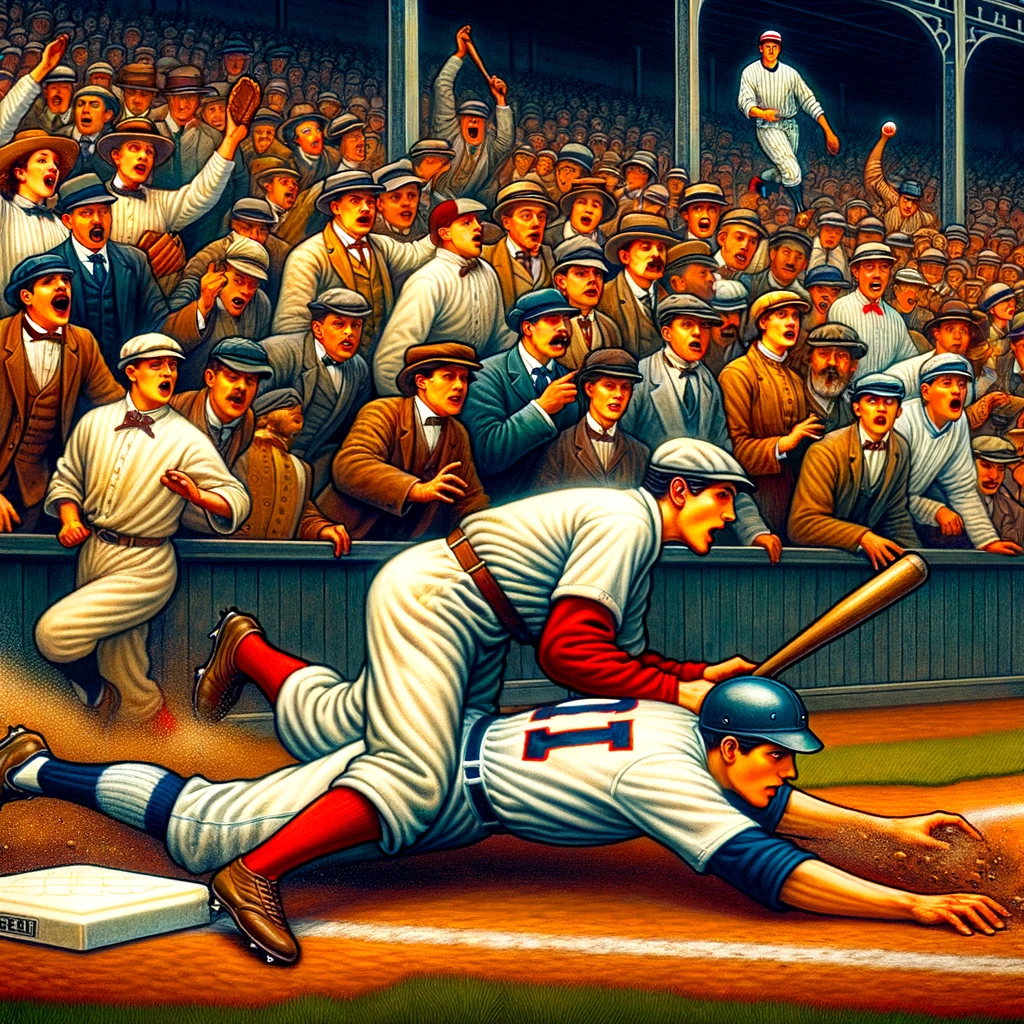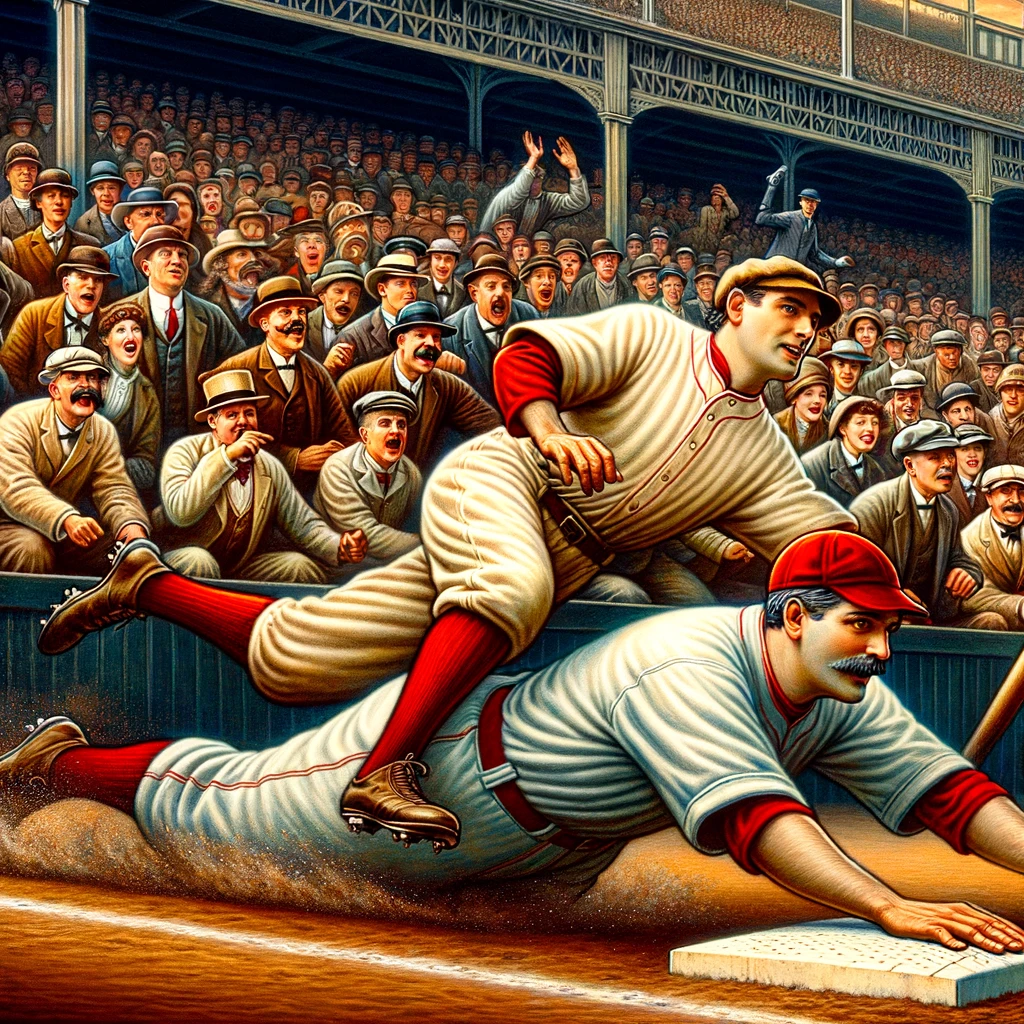Baseball, America’s beloved pastime, has undergone a remarkable transformation since its inception. The journey from informal amateur games to the highly structured professional sport we know today is a tale rich with historical significance. This article delves into the early history of baseball, highlighting the pivotal transition from amateur to professional play, a change that not only shaped the sport but also mirrored broader societal shifts.
The Roots of Baseball: Early Amateur Beginnings
To understand the transformation of baseball, one must first look at its early days. The origins of baseball are somewhat murky, with various folk games like rounders and town ball being its likely precursors. In the mid-19th century, baseball was predominantly an amateur endeavor. Clubs like the New York Knickerbockers, formed in 1845, played a version of the game that was more a social activity than a competitive sport.
These early games were casual, with loose rules and a focus on camaraderie. The New York Knickerbockers’ version of baseball, for example, emphasized gentlemanly play, with players often apologizing for good hits or smart plays that disadvantaged their friends. It was during this era that some of the foundational rules of modern baseball were established, including the diamond-shaped infield and three-strike rule.
The Emergence of Clubs and Leagues
As baseball’s popularity grew, so did the number of clubs. Teams began to emerge in different cities, each bringing their own local variations to the game. This growth eventually led to the need for a more standardized set of rules. The National Association of Base Ball Players (NABBP), formed in 1857, became the first organization to govern the sport, bringing together clubs from various regions.
The NABBP era marked the beginning of more organized play, with scheduled matches and recorded scores. However, the association still upheld the amateur ethos, disallowing professionalism in baseball. This stance, while noble in spirit, began to face challenges as the sport’s popularity surged.
The Shift to Professionalism
The transition from amateur to professional baseball was gradual yet inevitable. As the fanbase expanded, the commercial potential of the sport became increasingly apparent. Players, many of whom were working-class men, began to seek compensation for their time and skills. This shift was not without controversy, as many traditionalists viewed professionalism as a corruption of the sport’s amateur spirit.
In 1869, the Cincinnati Red Stockings made history by becoming the first openly professional baseball team. Led by Harry Wright, the team embarked on a nationwide tour, playing and defeating amateur clubs across the country. This tour was a pivotal moment, showcasing the skill and appeal of professional baseball.
The success of the Red Stockings triggered a domino effect, with other teams soon embracing professionalism. The establishment of the first professional league, the National Association of Professional Base Ball Players, in 1871, marked a definitive end to the amateur era. This league, though short-lived, laid the groundwork for the development of modern professional baseball.
The Impact of Professionalism
The shift to professionalism had profound implications for baseball. On the field, the quality of play improved dramatically. Professional players, dedicating themselves full-time to the sport, honed their skills to a level unattainable by amateurs. This era saw the emergence of star players, individuals who drew crowds with their exceptional talent.
Off the field, the move to professionalism changed the structure and economics of the sport. Baseball became a business, with team owners, player contracts, and ticket sales. This commercialization, while lucrative, also introduced new challenges, such as the need for player rights and team regulations.
The Societal Context
The transformation of baseball from an amateur pastime to a professional sport mirrored broader societal changes. The late 19th century was a period of rapid industrialization and urbanization in America. The emergence of a working-class population with leisure time and disposable income created a fertile ground for professional sports.
Moreover, the professionalization of baseball reflected the growing capitalist ethos of the time. The idea that players could earn a living through their athletic skill was a manifestation of the American Dream. However, it also highlighted class divisions, as the move to professionalism excluded those who could not afford to play without compensation.
The Legacy of the Transition
The transition from amateur to professional baseball was more than just a change in how the game was played. It marked a turning point in American culture, where sport began to reflect and influence societal values. Baseball’s professional era paved the way for other sports to follow suit, contributing to the rise of the sports industry as we know it today.

The Evolution of Rules and Gameplay
The professionalization of baseball brought with it a significant evolution in the rules and style of play. As the sport became more competitive, the need for standardized rules became paramount. This led to numerous changes that would shape the modern game. For instance, the introduction of a standardized ball and the agreement on a set field size made the game more uniform across teams and leagues.
One of the most notable changes was the transition from underhand to overhand pitching. This shift, which occurred in the 1880s, dramatically altered the dynamics of the game, increasing the speed and difficulty of batting. It was changes like these that elevated the skill level required in professional baseball and set it apart from its amateur predecessor.
Key Figures in the Transition
This era of transformation was marked by several key figures who played pivotal roles in the evolution of baseball. Harry Wright, manager and player of the Cincinnati Red Stockings, was a significant proponent of professionalism. His vision and leadership in forming the first professional team were crucial in setting the stage for the future of professional baseball.
Another notable figure was Alexander Cartwright, often credited with developing the modern rules of baseball while a member of the Knickerbocker Club. His contributions helped to standardize the game, making it more suitable for competitive play.
Players like Cap Anson, who played for the Chicago White Stockings, also played a significant role. Anson was one of the first superstars of professional baseball, known for his hitting prowess and leadership skills. His fame and skill drew large crowds, helping to cement baseball’s popularity and economic viability.
The Fan Experience and Social Impact
The professionalization of baseball significantly altered the experience of the fans. Baseball games became major events, drawing large crowds and fostering a sense of community and local pride. This was a stark contrast to the small, community-focused gatherings of the amateur era.
Professional baseball also played a role in bridging social divides, albeit imperfectly. It brought together diverse groups of people, though it must be noted that this era was also marked by segregation and racial discrimination, most notably the establishment of the color line barring African American players from the major leagues until Jackie Robinson broke the barrier in 1947.
The rise of professional baseball also had a broader cultural impact. It became a symbol of American values like hard work, competition, and fair play. The success of professional players served as an embodiment of the American Dream, where talent and hard work could lead to fame and prosperity.
Comparison with Other Sports
The transition of baseball from amateur to professional parallels similar developments in other sports during the same period. For example, American football and basketball also began as amateur pursuits and gradually professionalized. These sports followed a similar trajectory, with the establishment of professional teams and leagues, leading to an increase in popularity and commercial success.
However, baseball’s transition was unique in its timing and impact. It was one of the first major sports in the United States to professionalize, setting a precedent for others to follow. Its deep roots in American culture and its role as a leisure activity made its professionalization particularly significant in the context of American sports history.
Legacy and Continuing Evolution
The early history of baseball, marked by its shift from amateur to professional status, continues to influence the sport today. The professionalization of baseball set in motion a series of changes that have continued to evolve. Today, Major League Baseball (MLB) is a multi-billion dollar enterprise, with advanced technology, extensive media coverage, and a global fanbase.
Despite these changes, the spirit of the early days of baseball persists. The sense of community, the love of the game, and the appreciation of athletic skill remain at the heart of baseball. The legacy of the sport’s pioneers, from the amateur clubs of the mid-19th century to the trailblazers of the professional era, is a testament to the enduring appeal of baseball as both a competitive sport and a cultural touchstone.
Conclusion
The transformation of baseball from an amateur pastime to a professional sport was a significant chapter in not only the history of the game but also in American cultural and social history. This transition reflected the changing dynamics of American society in the late 19th century, marked by industrialization, urbanization, and shifts in social values. The professionalization of baseball improved the level of play, broadened its appeal, and established it as a major component of American culture. As we continue to enjoy and celebrate baseball today, it’s essential to appreciate its rich history and the pivotal period when it evolved from an amateur endeavor to the professional spectacle we know and love.
